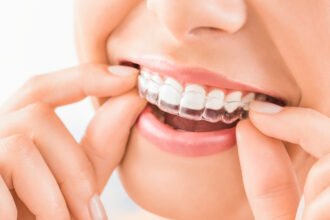The medical device industry is changing rapidly as more patients and doctors turn to biotechnology to improve their lives. As a result, medical device manufacturers are forced to embrace technology and innovation to continue growing and improving their products to stay ahead of the curve. As a result, companies are looking for new ways to develop their products and make them more efficient.
As part of this process, they are looking to medical device developers to help them with medical device prototype development. There are even companies offering shelter services in Mazatlan, Mexico and similar countries with lower costs of production that can steamroll the whole process even further. In this article, we’ll talk about the 6-step process for developing a medical device prototype.
Step 1: Identify the Problem and Define the Need
Before developing a medical device prototype, you should first define the problem or need you want to solve. Next, you need to understand your patients’ issues and what your product will do to address those problems. It’s also important to know why your product differs from other devices. This will help you develop the right solution for your target audience.
Your device needs to be something that stands out from the rest. It also needs to be unique.
If your device is not unique, it will not be seen as a good investment, and people may think that someone else has already solved this problem. In addition, you must realize that not every medical device prototype development will have the same potential market size. Therefore, deciding whether your device will be a niche or a mainstream product is essential. You can also determine this by asking yourself whether your device will be used by many people or only a few.
If you are developing a niche product, then it is better to keep it simple and easy to use. Also, the device should be affordable so that many people can afford it. On the other hand, if you are developing a mainstream product, it is better to create a device that can satisfy a wide range of people.
If you are a medical device development beginner, you may find it challenging to start. But there are many online resources available that can help you understand the basics of the industry.
The best way to learn about medical device development is to ask questions. Ask questions from the experts who are already in the business. You can also join forums and social media groups. These are great places where you can get advice from other people. You can also ask your friends who are already in this business.
Step 2: Conduct Market Research and Develop a Product Concept
Market research is an essential part of the medical device prototype development process. It’s important to understand what your competitors are doing, what the medical community is saying, and what consumers want to see in a medical device.
For example, what is the most popular way people treat their colds these days?
What are other cold remedies that are similar to yours? For example, what is the best way to treat sore throats? Once you know the answers to these questions, you can proceed to design your product.
In addition, it is vital to be aware of the current market trends. By keeping abreast of the latest developments in the market, you will be able to update your product to stay ahead of the competition.
Otherwise, you might have to modify your product or rethink your strategy to create something more unique and innovative.
Step 3: Build a Prototype
Prototype building is a vital part of the medical device design process. Prototypes are used to explore design alternatives, ensure the design works, and validate assumptions about the future performance of the final product.
The purpose of a prototype is to build a physical model that allows you to test and explore your ideas rather than relying on your imagination.
Prototypes are a great way to communicate your design ideas with others because they can be easily explained and tested. In addition, they can be used to validate ideas, such as whether the product will fit in a specific space or what materials will be needed to build the product. They can also test design assumptions, such as whether the product will perform as expected.
Step 4: Test and Analyze the Results
Once you have built your prototype, it is time to analyze the results. Analyzing results helps you to determine whether your product is a viable option for your market. If your product is not feasible, it is time to look for another option. However, if your prototype was successful, you can now move forward with the design of your product. You can use the results of your analysis to guide the design process.
Testing is done using prototypes and is an essential step in medical device design. Testing can help ensure the product works properly and efficiently. It can also help you find ways to improve your product. Ensuring a product is safe and effective makes it easier for you to go through medical device licensing processes. For example, testing can help you find flaws in your design and figure out how to fix them. It can also help you find ways to improve your design so that it performs better.
For example, suppose your prototype was successful. In that case, you can focus on the design features that were most important to your target market.
If you are not receiving a positive response, you can change the product or how it is marketed.
Step 5: Produce the Product
After completing all of the testing, you need to produce the finished product. Depending on how many people are involved in the design and manufacturing process, you may need to create several different versions of the product. You may also need to produce multiple products for other markets or different uses.
Step 6: Market the Product
The final step is marketing of the product. This includes advertising the product and getting feedback from potential customers. This is also the step where you will make money off the product.
You can use any of the traditional advertising methods such as direct mail, television, radio, newspaper, etc.
Need Help with a Prototype?
HDA Technology is a leading medical device prototyping company in the United States. Our experts have helped develop products ranging from medical devices to prosthetics. We are a full-service medical device manufacturer, offering prototypes, pre-production, and production units. So if you’re interested in developing a medical device, we can help you get started.
Contact us today to learn more about our services.









